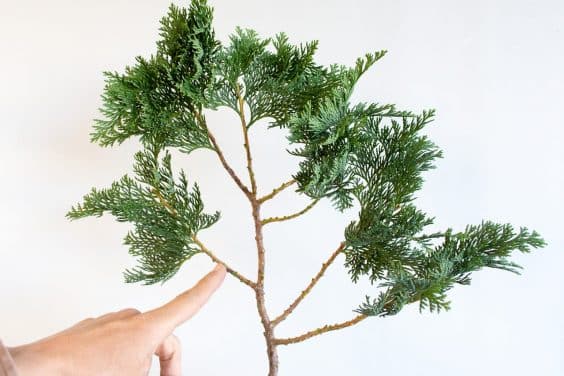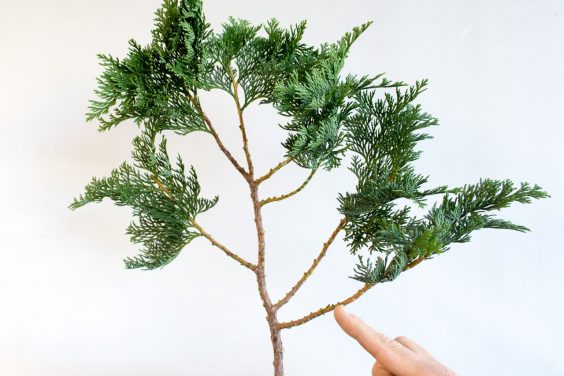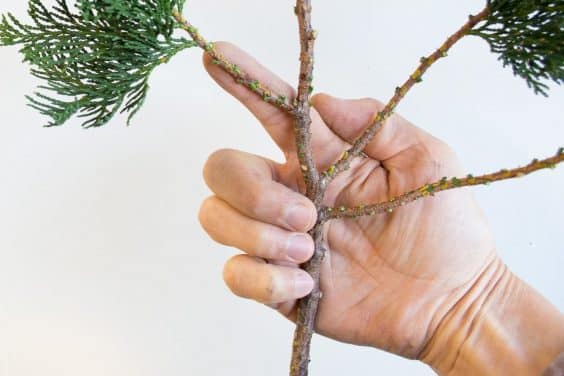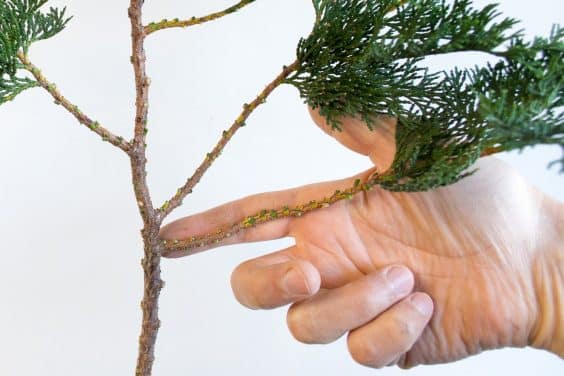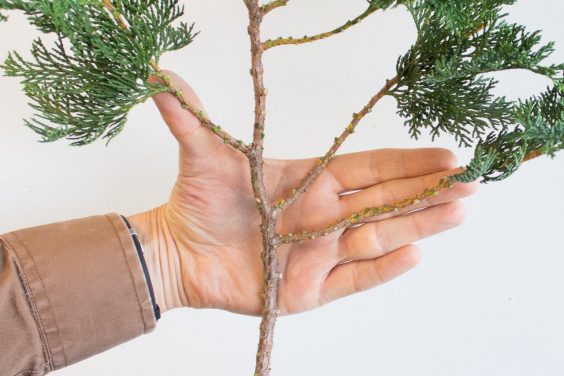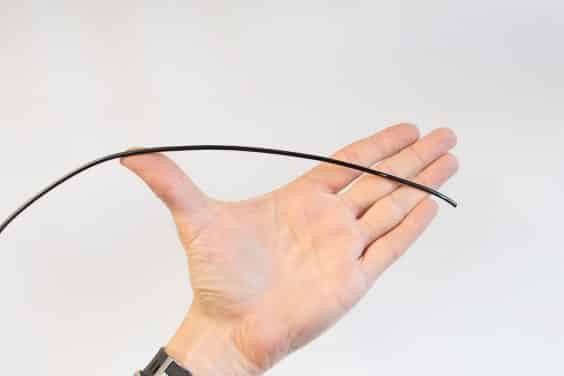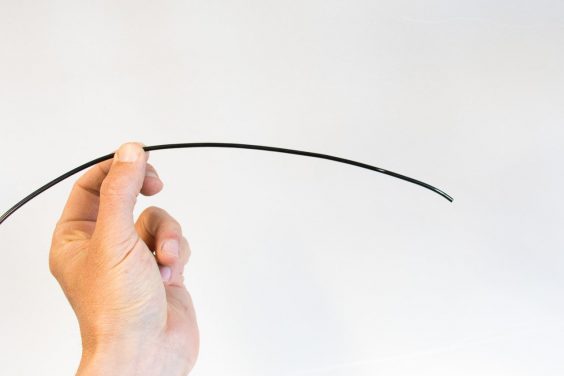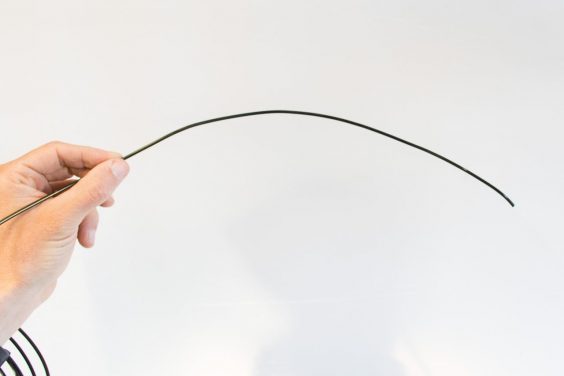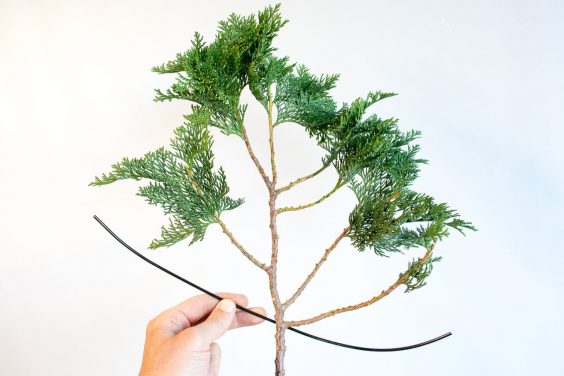There’s not much worse than cutting a piece of wire, applying it perfectly and then realizing, on the final turn, that the wire is too short.
I picked up my favorite approach to measuring wire from Daisaku Nomoto. I noticed he didn’t seem to look when he cut wire but the size was often perfect. Looking closer, I saw that he held the wire against his hand the same way every time he made a cut. He explained that he measures the distance the wire needs to travel with his hand and then adds a bit to account for the coils.
Here’s how he did it. Let’s say I wanted to wire the lowest shoot on each side of this branch.
Hinoki branch
The wire will connect this branch
To this branch
There are a couple of ways I can do this. The first is to measure each branch separately. Using this approach, I’ll place the tip of my index finger where I want the wire to finish and note where the second branch begins – in this case, right at the center of my hand.
The first length extends from fingertip to palm
Next I’ll measure the second branch.
This branch is exactly one finger-length
Alternatively, I can measure the entire distance in one go from the tip of my thumb to the end of my middle finger.
Measuring with thumb and fingers fully extended
I can then transfer the measure to a piece of wire.
Transferring the length
Ready for the next step
While this tells me how long the wire must travel, it doesn’t tell me exactly where to cut. To this measure, I’ll add an extra 1/3 to 1/2 of the length to account for the coils.
1.5 times the distance from thumb to middle finger
I can now make the cut and wire the branch.
Ready to go
With a little practice, measuring distances with fingers and hands can become second nature. The part that requires some experience is determining how much extra to add to account for the coils. Here are some situations that may require longer cuts.
- The branches to be wired are thick
- The wire must travel around the trunk
- The coils will be closer together
- There are obstacles like jin that the wire must travel around when connecting branches
Over time you might find patterns in the way you cut wire. If so, making changes can be easy. And if not, there’s always the option of more practice!
Subscribe to Bonsai Tonight
New Posts Delivered Every Tuesday and Friday

